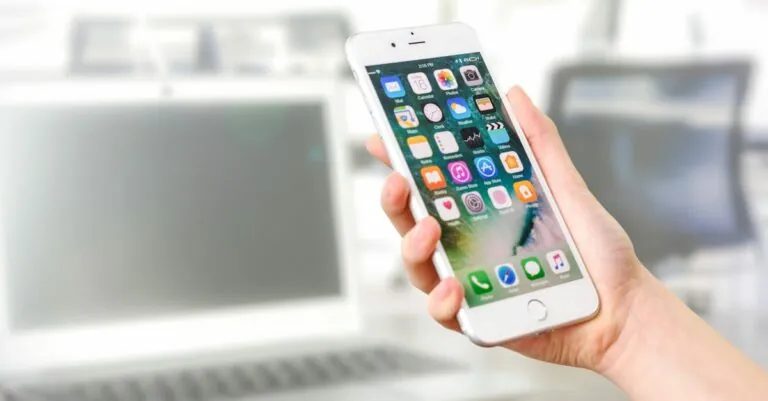Ever found yourself staring at your phone, desperately trying to download that must-have app, only to be met with the dreaded “download failed” message? It’s like your phone’s playing hard to get, and trust me, it’s not you—it’s definitely them. Whether it’s a sneaky storage issue or a rogue setting that’s throwing a tantrum, the reasons can be as puzzling as your cousin’s conspiracy theories.
Table of Contents
ToggleCommon Reasons For Download Issues
Download issues often stem from various technical factors, making it difficult to install desired apps. Here are some common reasons affecting app downloads.
Insufficient Storage Space
Storage space plays a crucial role in downloading apps. Phones operate efficiently with sufficient free storage available. When storage is low, it leads to download failures. Users can check available space in the settings menu and remove unnecessary files. Deleting unused apps or media files can free up significant storage. Ensuring at least 1-2 GB of free space generally supports smooth downloads.
Poor Internet Connection
A stable internet connection is essential for successful app downloads. Weak Wi-Fi or cellular data can interrupt the download process. Users should verify their internet speed using speed test apps. Switching to a stronger network can incrementally improve download success rates. Sometimes, resetting the router or toggling Airplane mode can enhance connectivity. Consistent speeds of at least 3 Mbps are recommended for effective downloading.
Software Compatibility
Software compatibility issues can hinder app downloads on phones. Not all apps support every operating system version. Checking the app’s requirements before attempting to download is wise. Users can verify their phone’s operating system in the settings section. Updating the operating system when necessary ensures access to new app features. It’s also beneficial to ensure that the device meets the app developer’s minimum specifications.
Troubleshooting Steps
Resolving download issues involves a few straightforward steps. Users can follow these suggestions to identify the root causes effectively.
Check Your Storage
Verifying available storage ranks as a fundamental step. If a phone has less than 1-2 GB of free space, download attempts often fail. Users can navigate to their device’s settings and check storage usage. Uninstalling unneeded apps or removing large files helps reclaim storage. Clearing cached data from apps can also create additional space. Performing these actions often leads to successful app installations, enhancing device performance.
Test Your Internet Connection
Testing the internet connection serves as another critical step. A weak or unstable connection disrupts downloads, leading to failures. Users should run a speed test to evaluate their current internet performance. Switching to Wi-Fi from cellular data might improve connectivity. If Wi-Fi is in use, moving closer to the router or resetting the connection may help. Ensuring a stable internet connection facilitates smooth downloads, preventing frustrating interruptions.
Update Your Device Software
Updating device software often resolves compatibility issues. When system software lags behind, new apps may not install correctly. Users can check for software updates in their settings. Downloading and installing pending updates benefits overall device functionality. Frequently, developers optimize apps for newer software versions. Keeping software up-to-date results in a smoother experience when downloading applications.
Device-Specific Considerations
Different devices may present unique challenges related to app downloads. Understanding these factors helps identify the root of the problem.
Android Devices
Android users can encounter issues due to the diversity of device models and operating system versions. Compatibility is often an issue when downloading apps designed for specific Android versions. Checking the device’s software version ensures it meets app developer requirements. Insufficient storage space, typically less than 1-2 GB, can also hinder downloads. Users are encouraged to remove unnecessary apps and files to clear space. Additionally, network settings might require adjustments. Clearing the cache of Google Play Store can resolve problems related to corrupted data.
iOS Devices
For iOS users, downloading apps can fail due to specific settings or restrictions. The App Store might require an active Apple ID, so users should verify their login status. Insufficient storage remains a crucial factor; freeing up storage is vital for smooth downloads. Another area to check is the iOS version. Keeping software updated ensures compatibility with the latest apps. Users should also inspect their internet connection, as a weak signal disrupts downloads. Restarting the device may resolve minor glitches that prevent successful downloads.
When To Seek Help
Encountering persistent download issues may require extra assistance. If troubleshooting steps do not yield solutions, seeking help often becomes necessary.
Contacting Customer Support
Contacting customer support might be the best option when problems escalate. Representatives can provide tailored guidance based on specific issues. They may offer insights based on common download failures, including account-related problems or regional restrictions. Gathering information like device model and operating system version simplifies the support process. Many companies also have online chat features, allowing quick interactions. Using these resources can save considerable time and frustration.
Visiting a Service Center
Visiting a service center proves beneficial when issues persist after all troubleshooting efforts. Trained technicians can diagnose and resolve complex problems beyond basic user capabilities. They often have access to advanced tools and solutions not available to the average user. Explaining the download issue in detail ensures technicians focus on the correct symptoms. Providing proof of purchase might also be necessary for warranty-related repairs. A personal visit often leads to faster resolutions than remote support options.
Facing issues when trying to download apps can be frustrating but understanding the common causes can ease the process. Ensuring there’s enough storage space and a stable internet connection is crucial for successful downloads. Regularly updating device software not only improves compatibility but also enhances overall performance.
For those who continue to encounter problems despite troubleshooting, reaching out to customer support or visiting a service center can provide additional assistance. By taking these steps, users can get back to enjoying their favorite apps without unnecessary delays.





